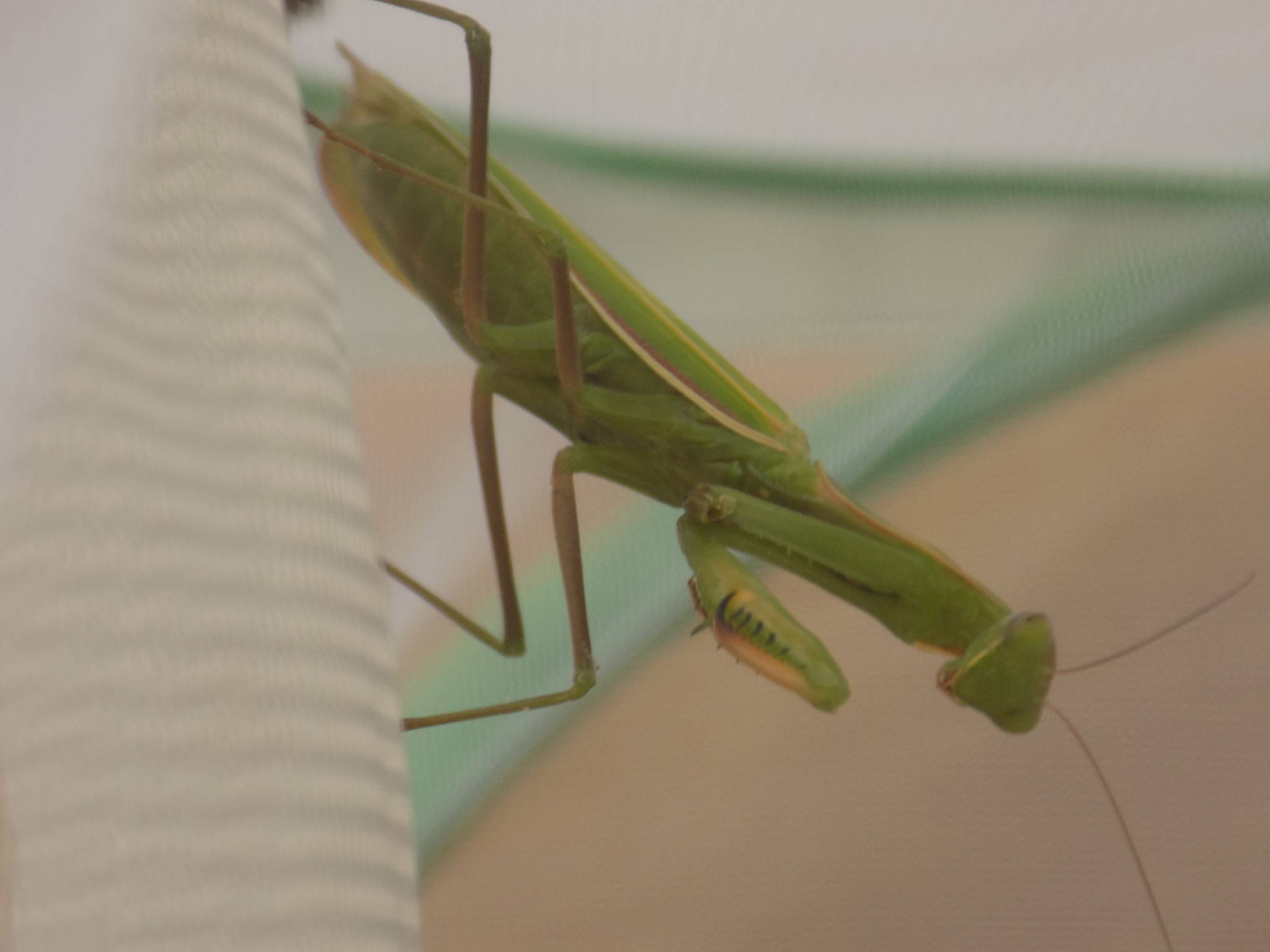Submitted by Kwiaht
Kwiaht has received several reports of the European Praying Mantis in the San Juan Islands, as well as a live specimen for confirmation. This is a concern for the conservation of pollinators and other beneficial insects that mantids will eat indiscriminately. Mantids eat everything they can subdue, and do not distinguish between, what humans regard as harmful or beneficial insects.
This large aggressive insect is native to the eastern Mediterranean region and was first introduced to North America as early as 1890. Its arrival in the Pacific Northwest is more recent, however; and for many years the only significant population was in the Okanogan valley of British Columbia. Sightings in the Salish Sea have been scattered and few, but they are increasing. Most mantid species worldwide are tropical, and only a handful are native to the United States — all of them restricted to warm climates from the Carolinas to Texas and southern California.
Like dragonflies, mantids are very large predators – large enough to compete with birds, frogs and small mammals like bats and shrews for prey. But while dragonflies hunt on the wing, snatching their prey in mid-flight, mantids are sit-and-wait predators like toads that snatch prey venturing too close to them. In habitats where multiple species of mantids co-exist, they feed at different heights in different kinds of vegetation, minimizing competition. Mantids can fly, but tend to walk and climb, very slowly, unless they are threatened.
Female mantids are infamous for consuming their mates. Field studies suggest that about a third of mantid matings end in cannibalism. Meticulous observation by César Gemeno and Jordi Claramunt a decade ago found that male mantids often watch females from a safe distance, and are more likely to approach them while they are already eating something else!
When another insect approaches within about six inches, the mantis swivels its tiny head from side to side, and may also take one step backwards and then forwards. These movements enable the mantis to determine the distance that it must cover, in painfully slow motion, before snatching its prey. As far as we know, mantid eyes detect nearby motion and little else.
Mantids have a single ear located between their legs in their metasternum, rather like a belly button, and experiments have shown that they are tuned to ultrasound in the exact range that the larger insectivorous bats use for echolocation. Mantid ears can detect approaching bats but cannot tell their direction. Flying mantids are probably more vulnerable to bats than mantids sitting absolutely still.
Although mantids make fascinating, if somewhat predicable pets in a home terrarium, it appears that mantids are being sold as beneficial insects for release in home gardens. This is misinformed and unfortunate. In the islands, all mantids are non-native, invasive, and probably do more harm than good in gardens and natural areas.
In our experience with captive mantids, they are not picky eaters. Rather, they eat any insect they can catch and subdue. This means that while well-intentioned gardeners may buy mantids to eat aphids and other “pests”, the mantids will also happily eat bees, ladybugs, and other beneficial insects as well. Like pesticides, mantids kill everything they touch. They may be “organic” but they are nonspecific killers and—unlike pesticides—they do not dissipate, degrade chemically and go away after a few days or weeks; instead, they multiply.
Until now, the principal predators of pollinators in the islands have been spiders that ambush bees and hoverflies when they are nectaring in flowers, and large hunting wasps such as Yellowjackets. Adding another, even larger predator is a threat to native pollinators, as well as other beneficial native insects, such as Tachnid flies that control tent caterpillars, and Ladybird beetles that control aphids. Insects here in the islands do not necessarily recognize mantids as threats and may not avoid them.
Climate change will probably accelerate the spread of mantids introduced into the islands. Mantids lay eggs in late summer and fall, and the embryos are dormant until spring. Cold winters sharply reduce survival. But the long range forecast for the Salish Sea is warmer (albeit stormier) winters, which will enable more mantid eggs to survive and hatch.
Kwiaht is offering to accept any and all mantises captured in the islands, for use in local classrooms as study animals: maintained alive but never released back into island ecosystems. Contact kwiaht@gmail.com for further information.



